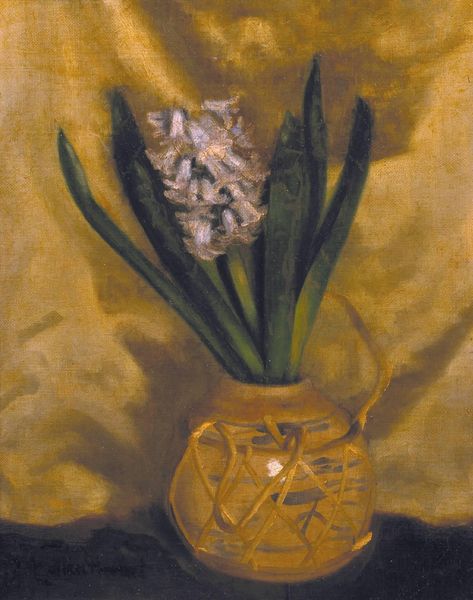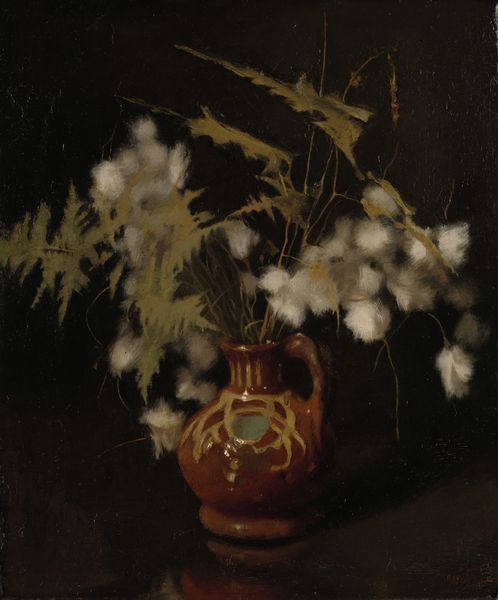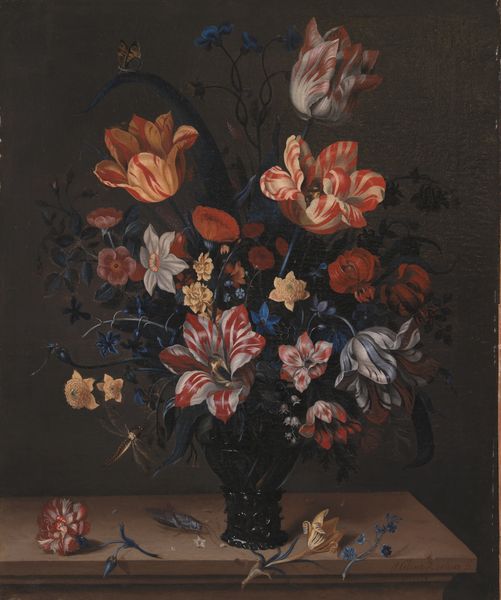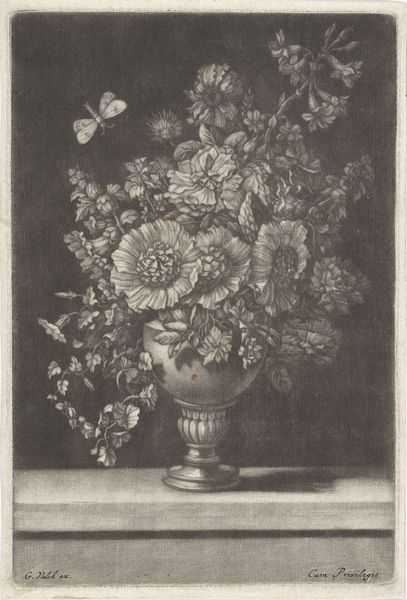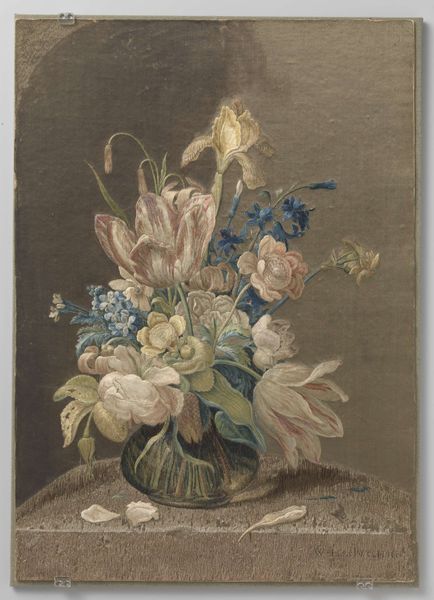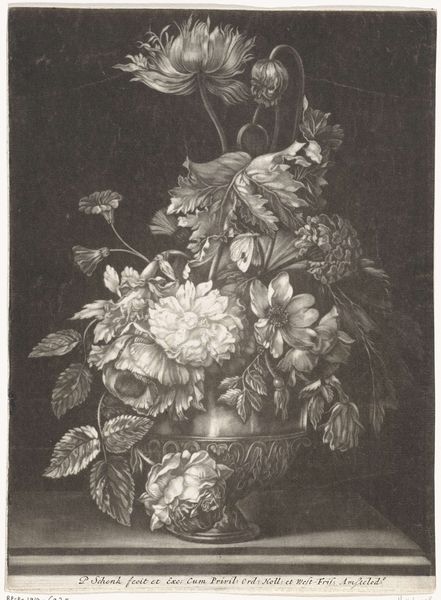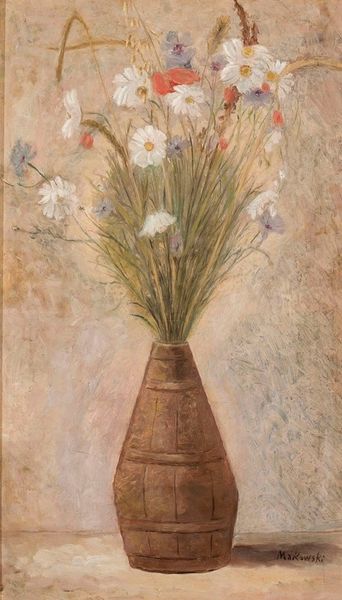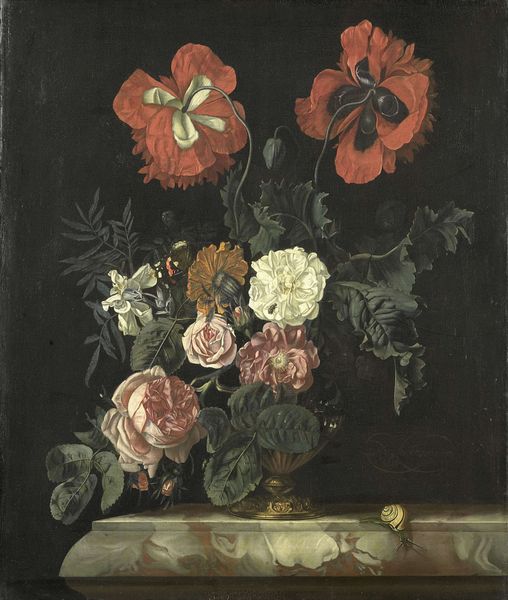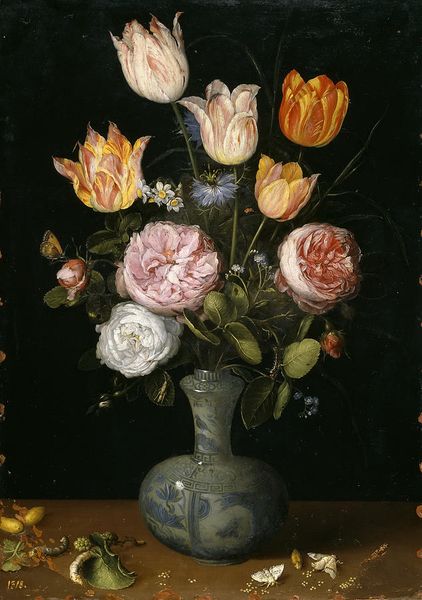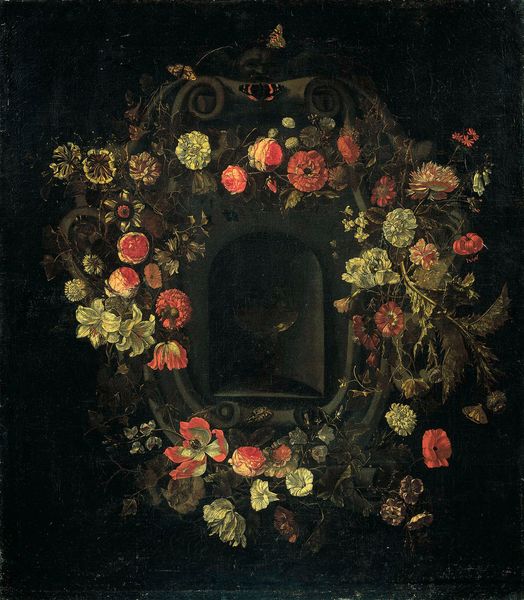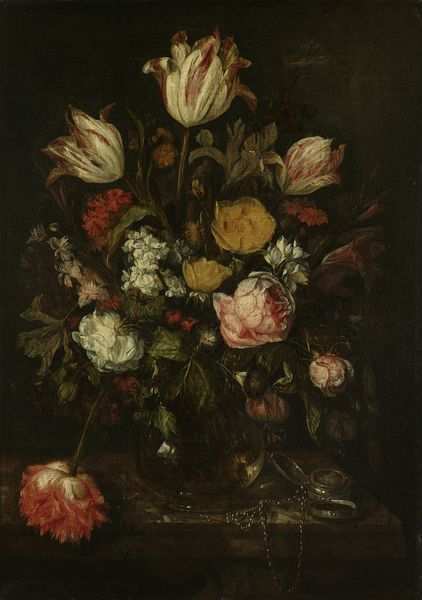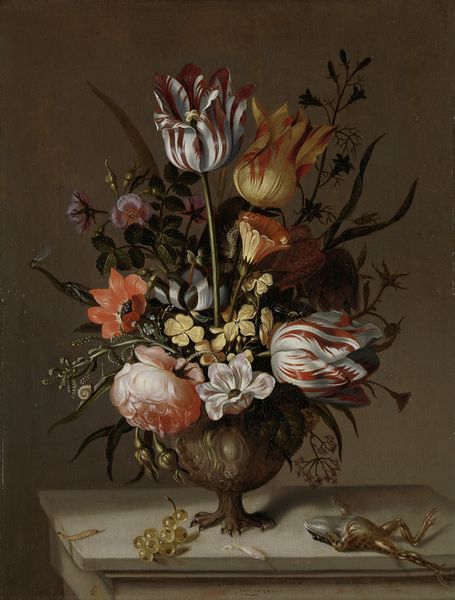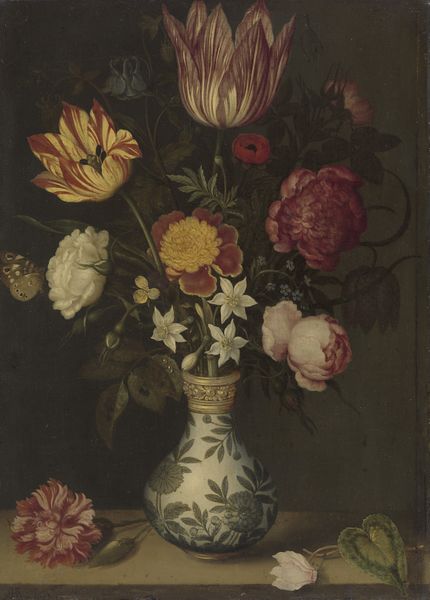
Still Life with a Jug with Flowers. The reverse side of the Portrait of a Praying Man 1480
0:00
0:00
hansmemling
Thyssen-Bornemisza Museum, Madrid, Spain
painting, oil-paint
#
painting
#
oil-paint
#
figuration
#
northern-renaissance
Dimensions: 28.5 x 21.5 cm
Copyright: Public domain
Editor: We're looking at Hans Memling's "Still Life with a Jug with Flowers. The reverse side of the Portrait of a Praying Man," created around 1480 using oil paint. I’m immediately struck by the texture – from the smooth jug to the complex weaving on the tablecloth. It’s quite mesmerizing! What's your interpretation of this still life, looking beyond the surface? Curator: I’m fascinated by how the material components in this painting challenge the very notion of high art. We have meticulously rendered flowers, signs of status in the vase’s decoration and a detailed textile. These things tell us a lot about the means of production, and even consumption, during that era. Look closely at the surface of the jug – does it appear handmade? And what about the dyes used in that carpet? Editor: That’s a good point. I hadn't considered the process of crafting those items. So, it's not just about the aesthetic representation of a still life, but also the labor and resources that went into producing each element? Curator: Precisely! The materials themselves tell a story of trade, skill, and economic realities of the time. Consider how the acquisition of these materials—the pigments, the metals potentially used for tools, the textile itself—shaped social structures and defined relationships across different groups of people. Editor: So, you’re suggesting that by examining the materials, we gain insight into the societal fabric of 15th-century Europe? The materials act almost like historical markers of commerce and cultural exchange? Curator: Exactly. By analyzing how art is materially made, we acknowledge that artistry is always already entangled in a network of labour. How does this way of thinking affect your initial interpretation now? Editor: It's transformed it! Now I’m more curious about the unseen hands and markets behind each carefully painted detail. Thank you, I'm seeing much more depth within the painting! Curator: My pleasure. Recognizing materiality brings artworks closer to our contemporary focus on ecological concerns. I wonder about this artwork’s place within ongoing conversations about value, sustainability, and the role of making.
Comments
No comments
Be the first to comment and join the conversation on the ultimate creative platform.
